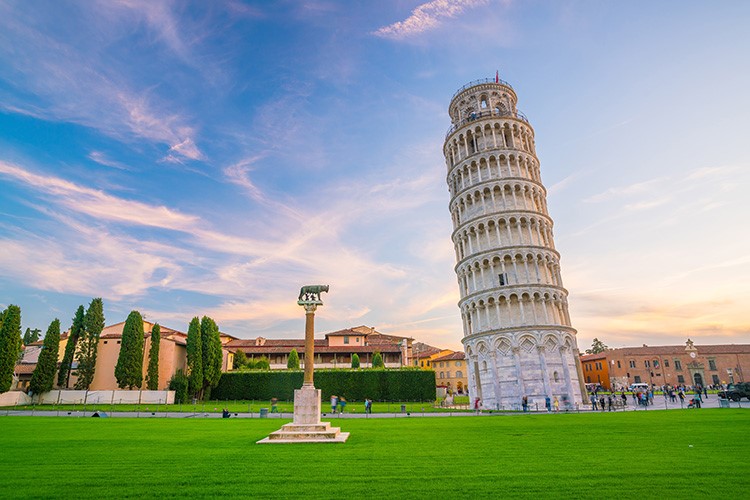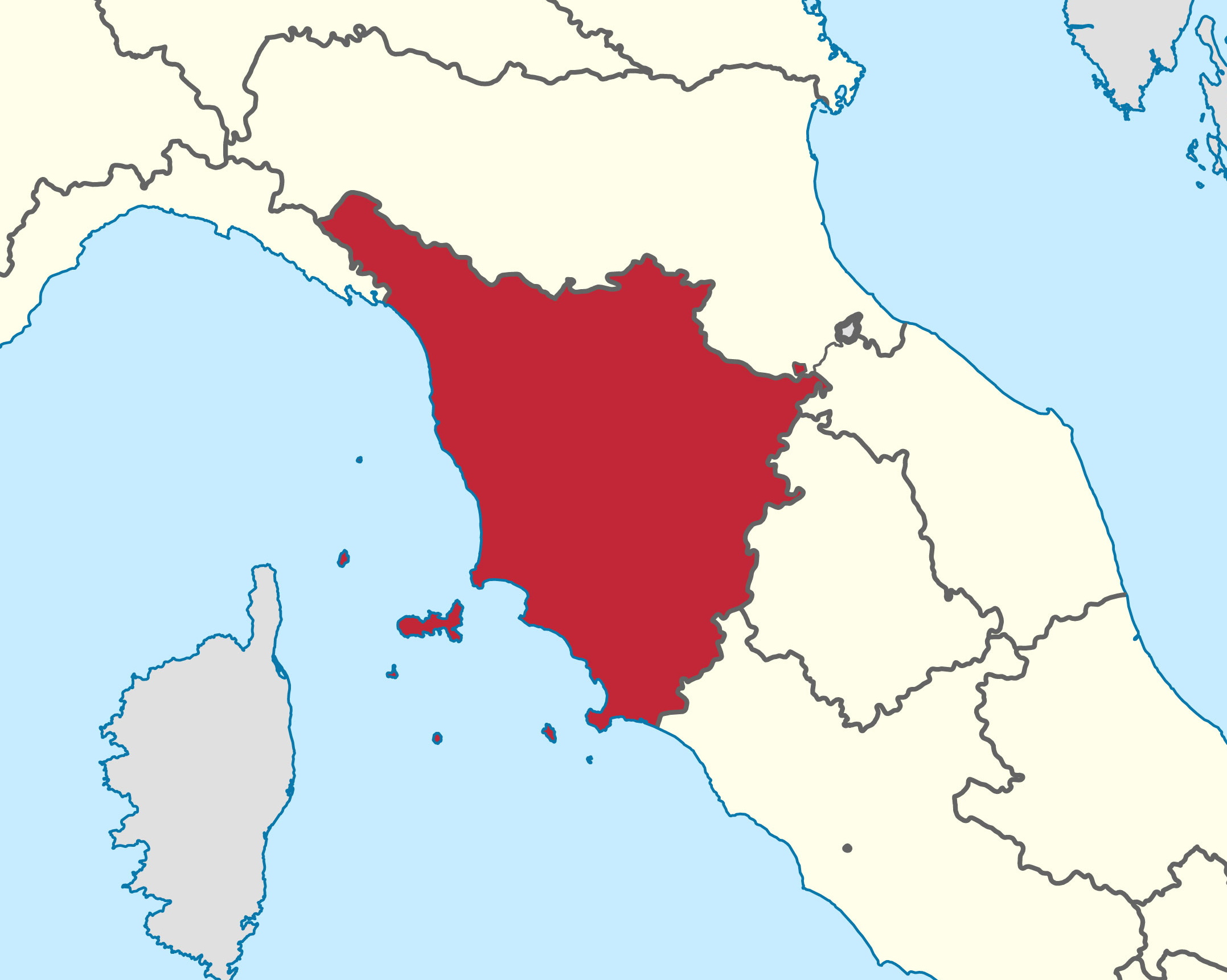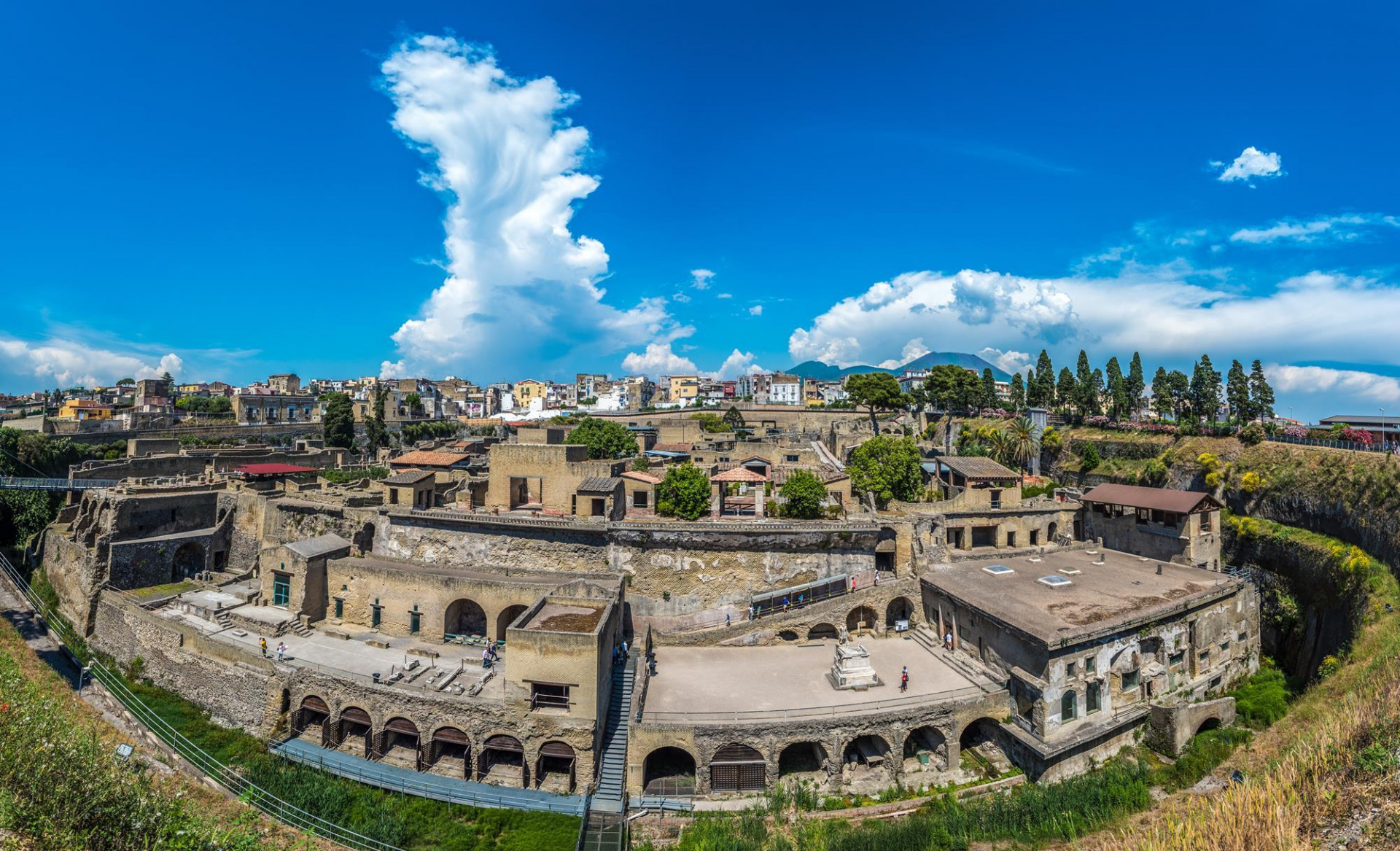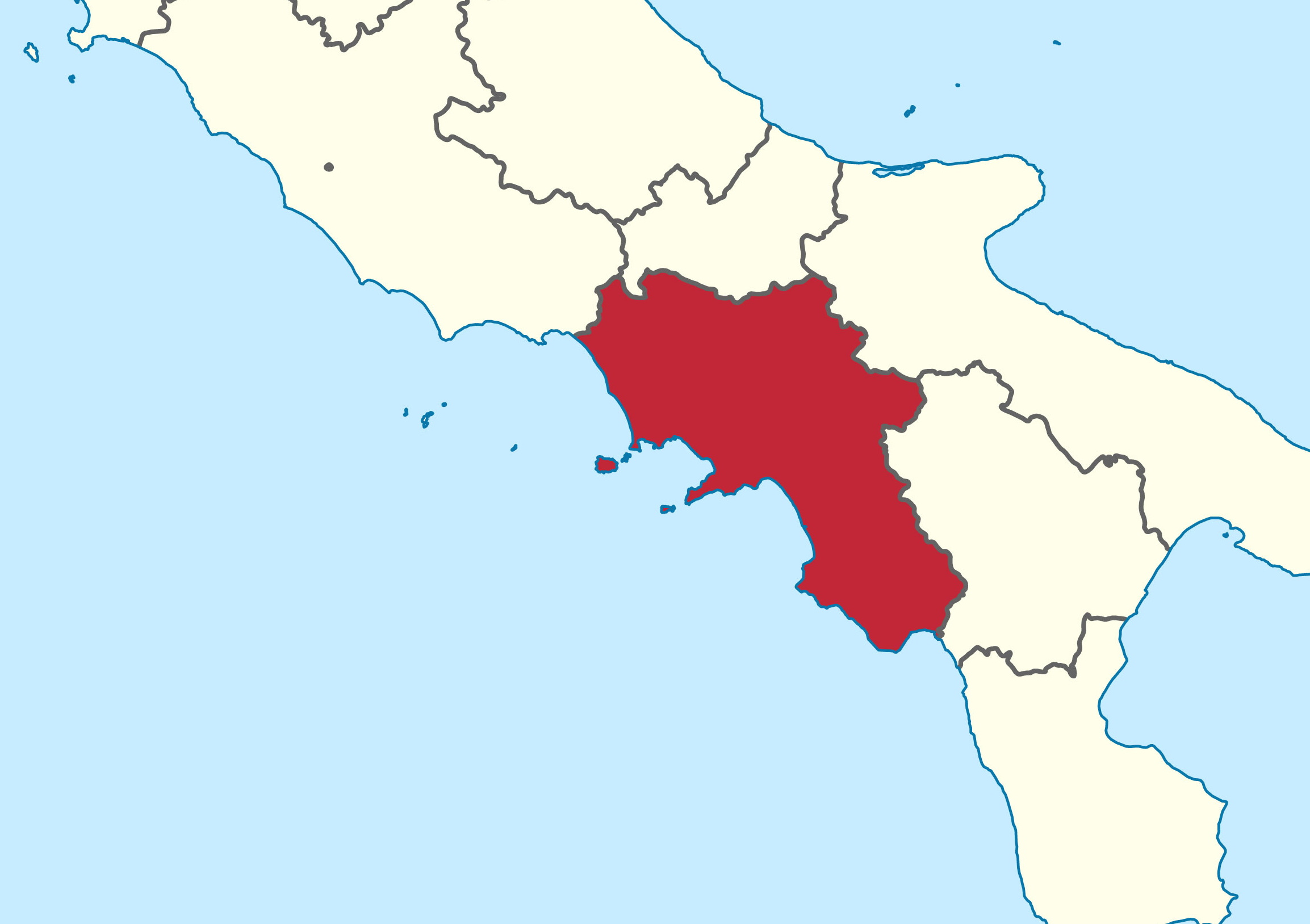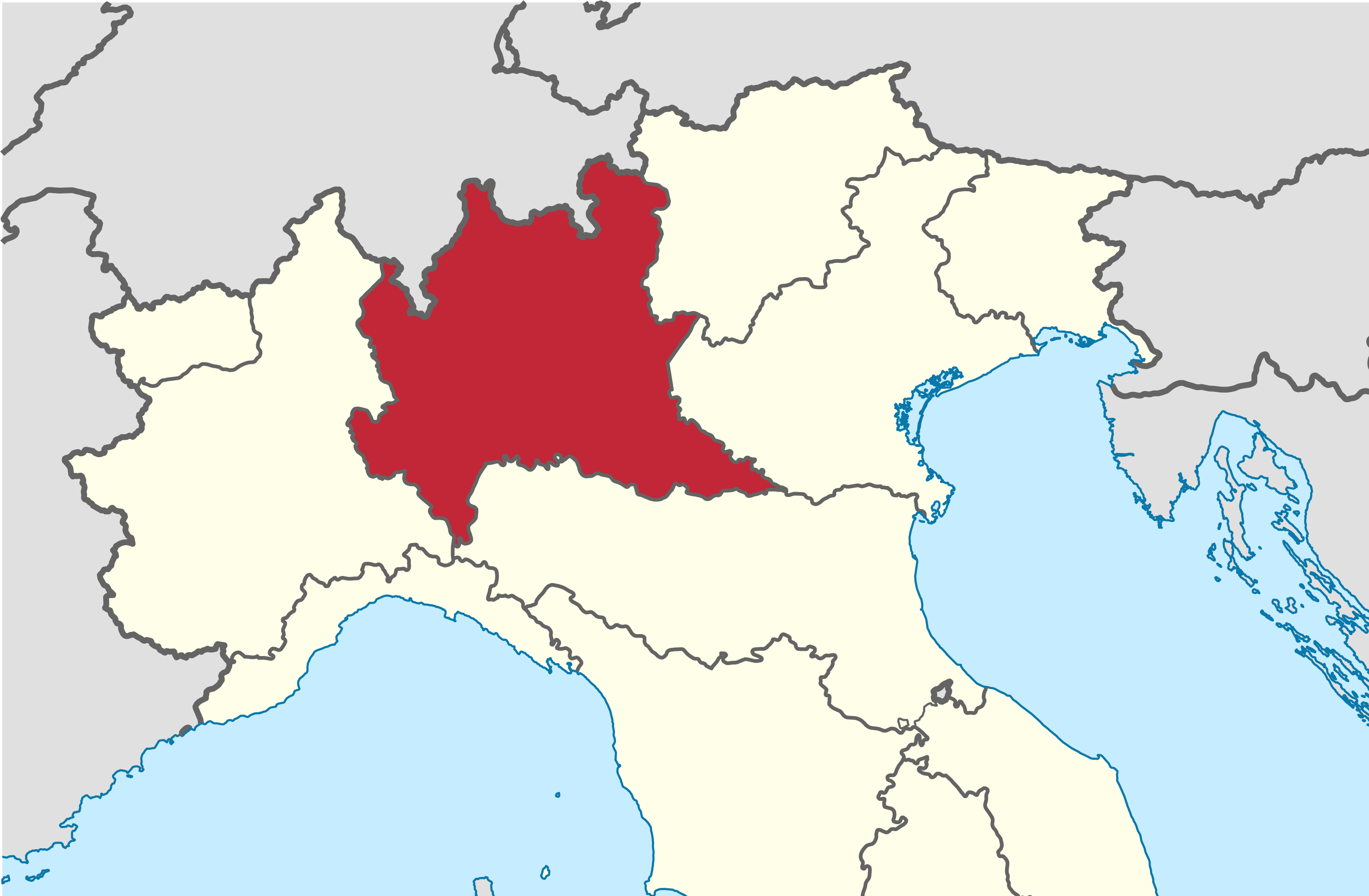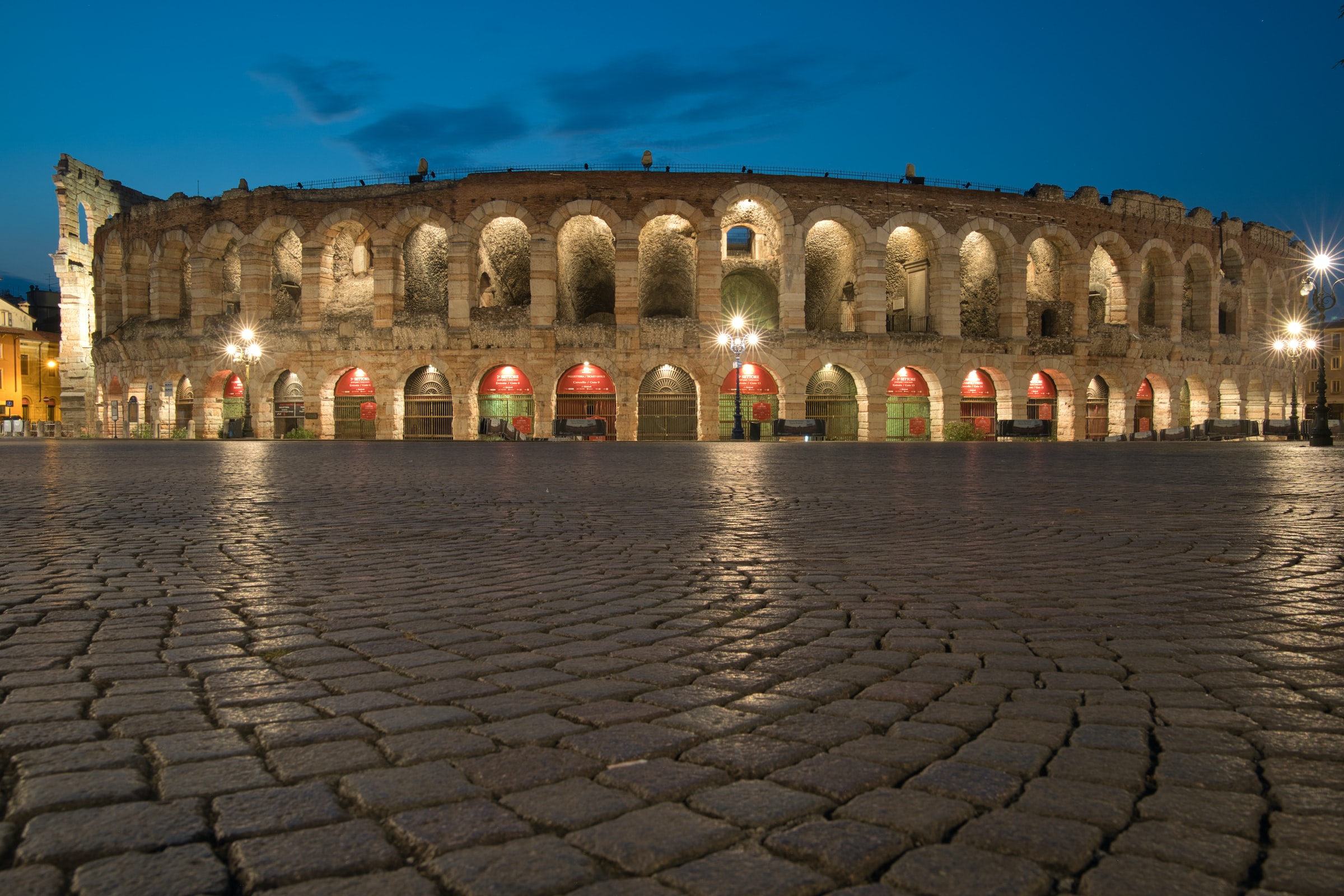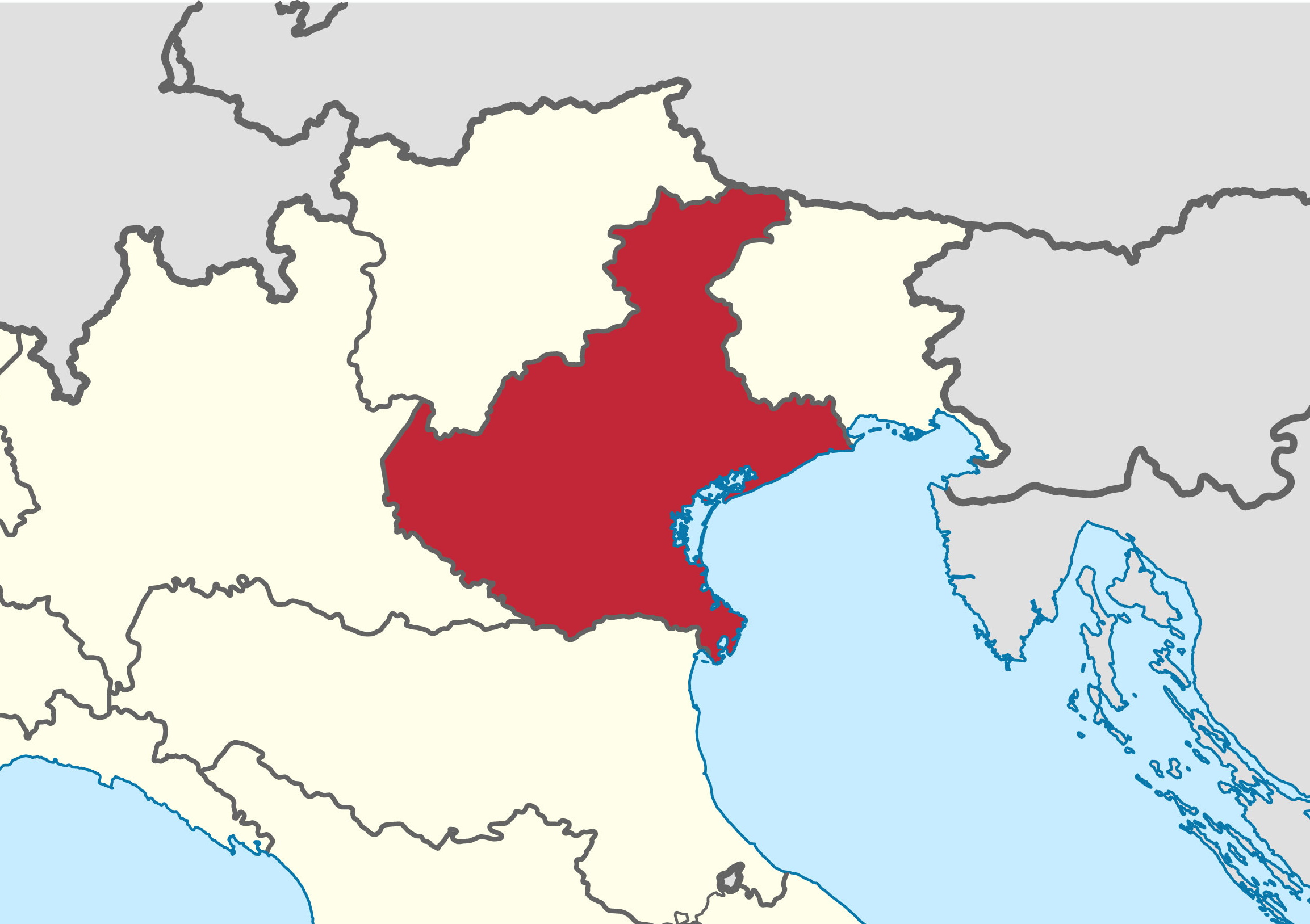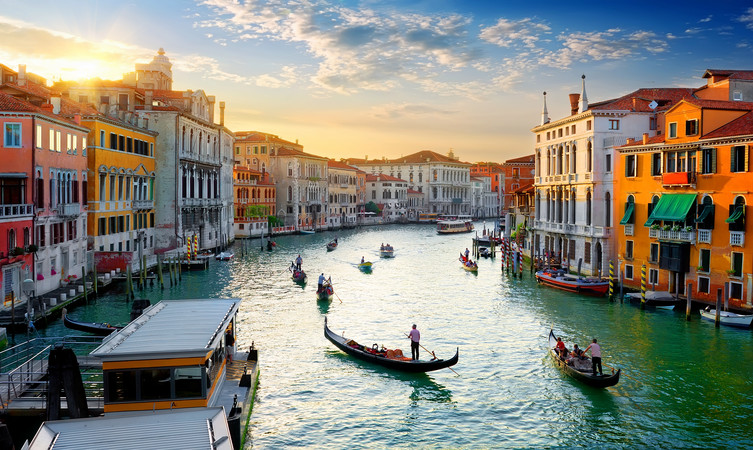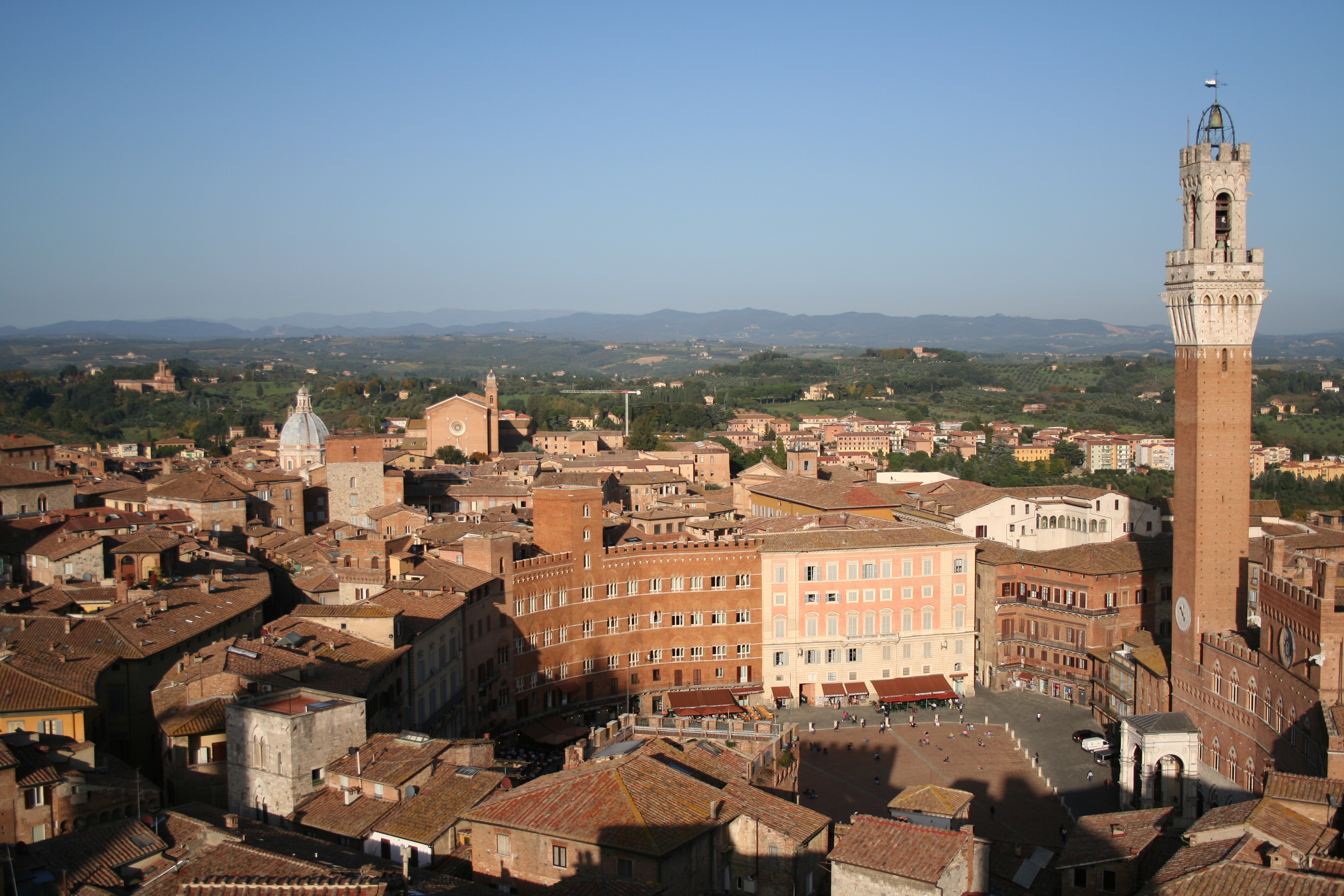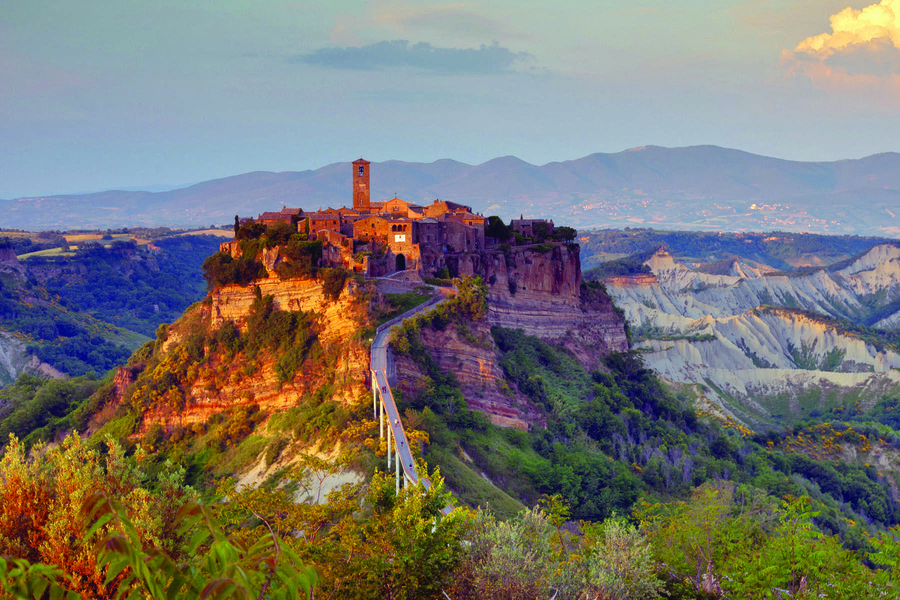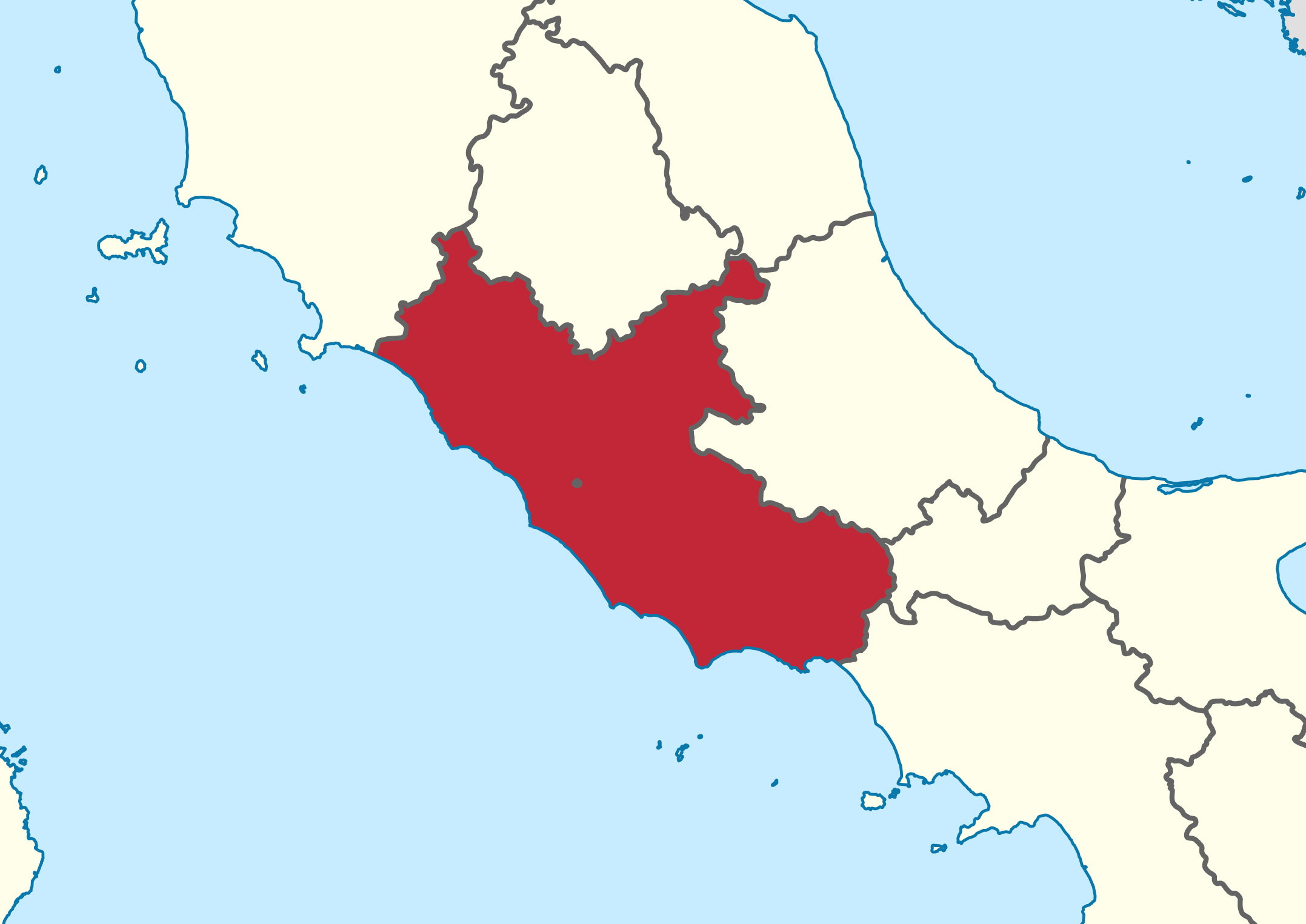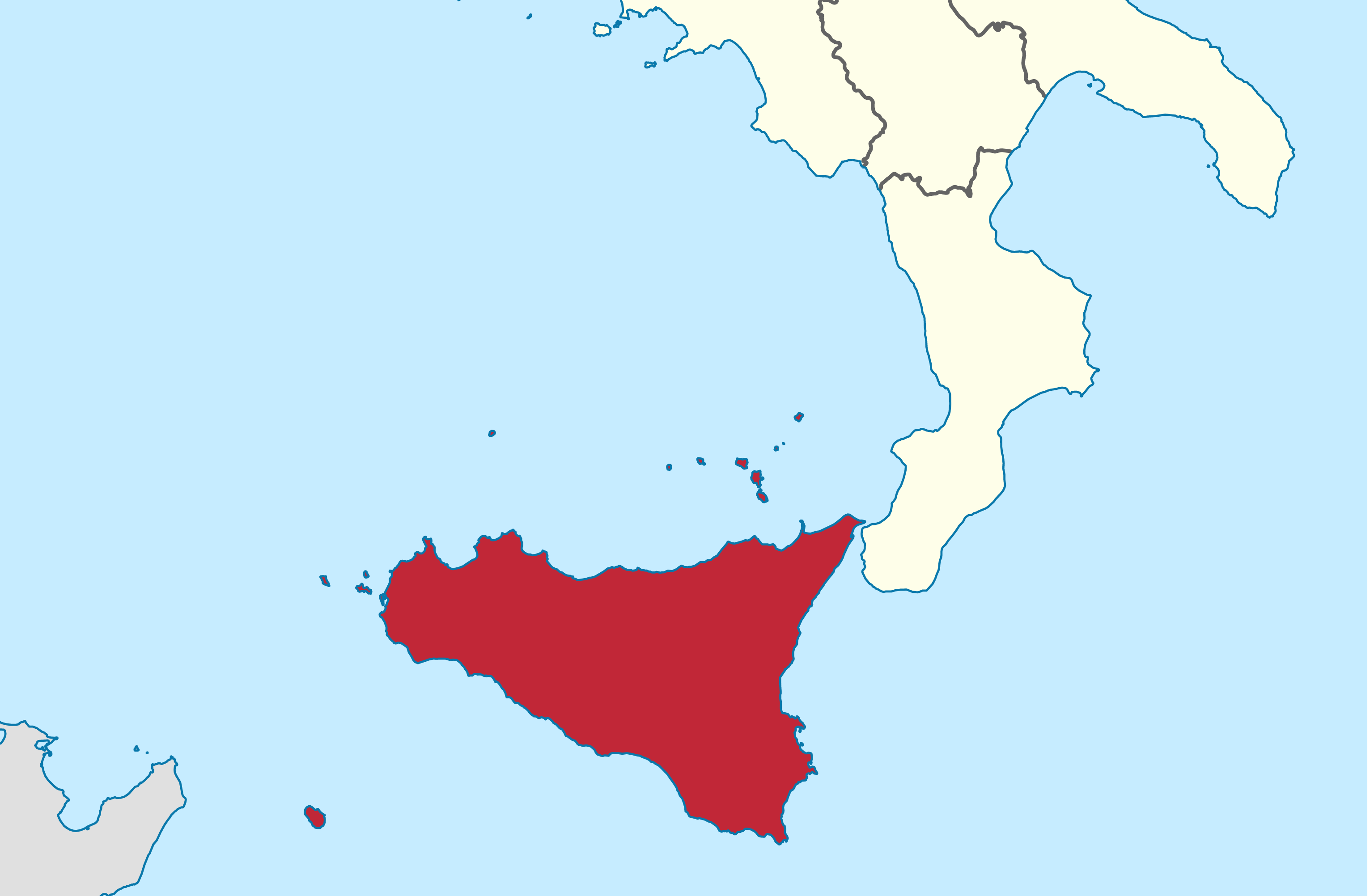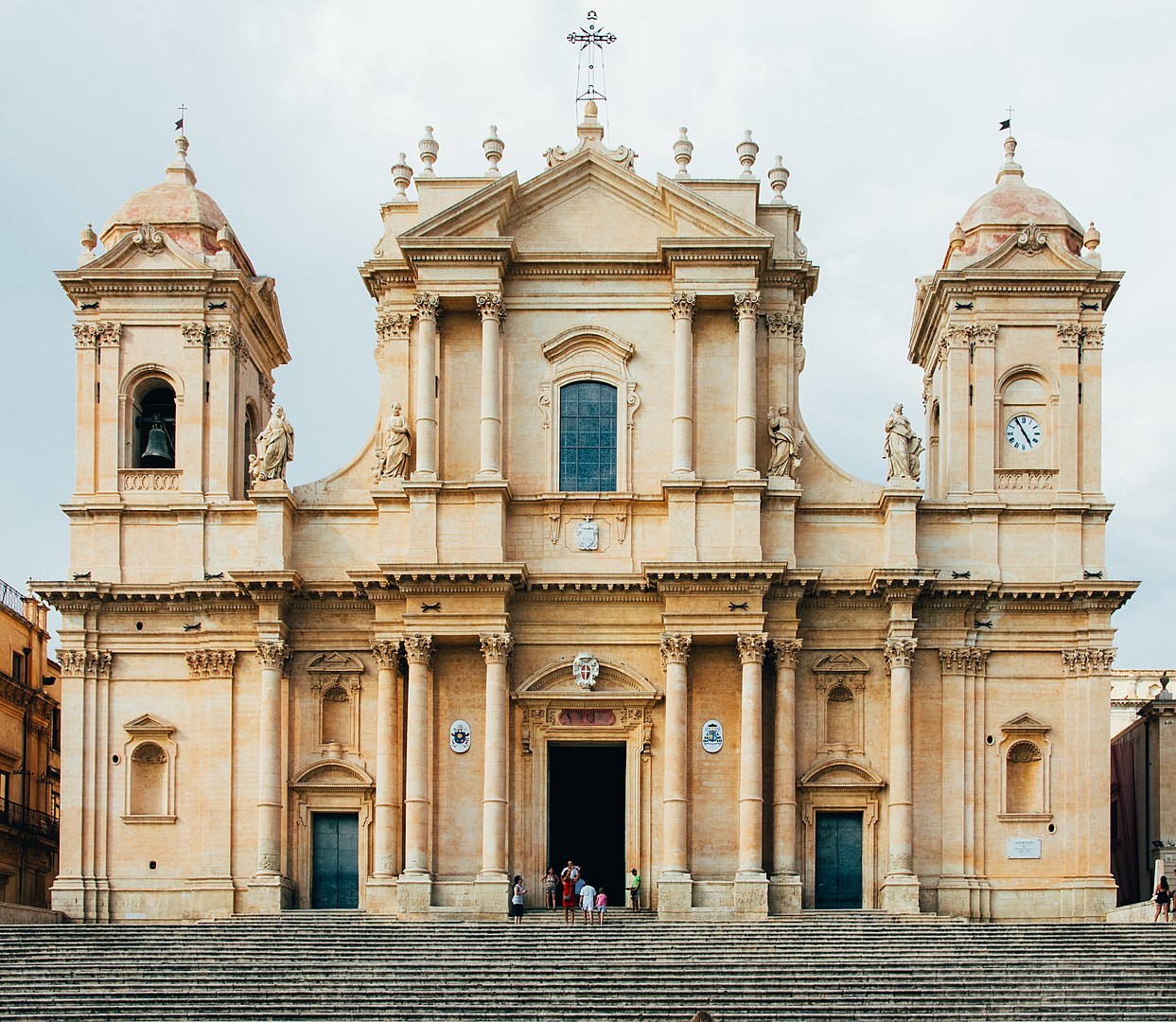places to visit
Historical Places
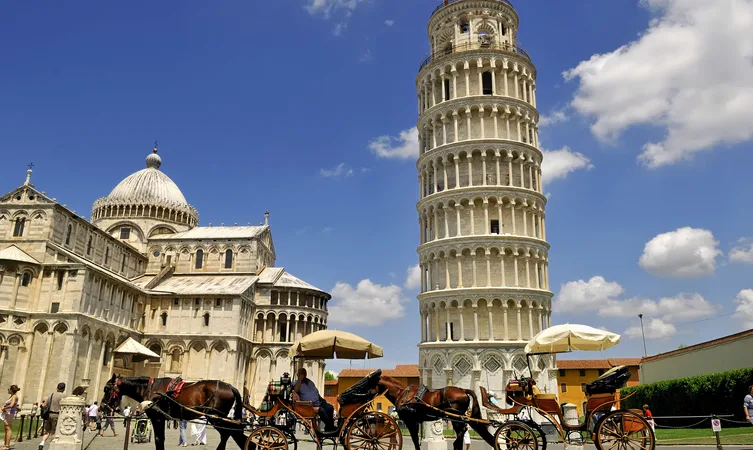
THE LEANING TOWER OF PISA - PISA
One of the Historical Places in Italy that you must visit is the Leaning Tower of Pisa or Italian Torre Pendente di Pisa, a UNESCO World Heritage site. Located in the medieval town of Pisa, this is the third oldest monument of the town which is well known for the settling of its foundation. Built between the 12th to 13th century, the constructors of the tower did not plan the tilt.
But when construction began, it started to tilt owing to the low strength of the ground. While visiting this place, you will be awe-stuck to see a 50 meters tall monument leaning 5.5 degrees (about 15 feet [4.5 metres]) from the perpendicular. Feel excited as you climb this monument and get a breathtaking view of the surrounding areas from the top.
About Leaning Tower of Pisa The Leaning Tower of Pisa, also known as the Tower of Pisa or ‘Torre pendente di Pisa’ in Italian, is one of the world’s most famous buildings due to its leaning stance, which leaves it forever appearing to be toppling over.
Originally construction of the Leaning Tower of Pisa was begun in 1174, with the intention of it being a freestanding bell tower for Pisa’s cathedral. Located in the Field of Miracles or ‘Campo del Miracoli’, the tower began to lean very early on in its construction, apparently around the time of the construction of its third floor.
The reason for the lean is that the ground on which it was built is sandy and unstable and the foundations used for the tower were insufficient to cope with this.
In 1185, a long period commenced in which construction of the Tower of Pisa ceased, the halt in progress usually being attributed to the fact that the Pisans were preoccupied with a succession of wars such as with Florence. Giovanni di Simone continued work on the tower in 1260 and, while there was a further pause in construction along the way, the Tower of Pisa was finally completed in 1360.
Since that time, the tower’s lean has continued to increase, leading to fears that it would indeed fulfil its promise to topple. Until 1990 the tower was leaning at a 10 degree angle. However, following an extensive and highly complex project, the Leaning Tower of Pisa is now stable.
TOP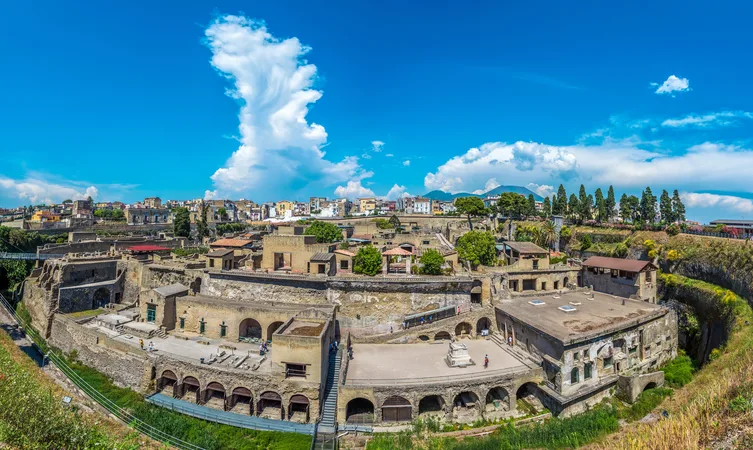
HERCULANEUM, NAPLES
Another one of the Historical Landmarks in Italy which you can visit is Herculaneum, which is also known as Ercolano in Italy. Herculaneum is an ancient Roman town which is situated on the outskirts of NAPLES. Visit this town which was named Hercules from the Greek god Herakles and was believed to be in existence in the 6th century BC.
Explore the ruins of one of the Historical Places in Italy that was buried by the ashes and volcanic lava at the time of eruption on Mount Vesuvius in 79 AD, and preserved more or less intact later on.
Herculaneum was an ancient town, located in the modern-day comune of Ercolano, Campania, Italy. Herculaneum was buried under volcanic ash and pumice in the eruption of Mount Vesuvius in AD 79.
Like the nearby city of Pompeii, Herculaneum is famous as one of the few ancient cities to be preserved nearly intact, as the ash that blanketed the town protected it against looting and elements. Although less known than Pompeii today, it was the first, and the only discovered buried Vesuvian city (in 1709) for a long time. Pompeii was revealed only in 1748 and identified in 1763.[1] Unlike Pompeii, the mainly pyroclastic material that covered Herculaneum carbonized and preserved more wood in objects such as roofs, beds, and doors, as well as other organic-based materials such as food and papyrus.
According to the traditional tale, the city was rediscovered by chance in 1709, during the drilling of a well. Remnants of the city, however, were already found during earlier earthworks.[2] In the years following the site's uncovering, treasure seekers excavated tunnels and stole artifacts. Regular excavations commenced in 1738 and have continued irregularly since. Only a fraction of the ancient site has been excavated as of today. Budget restrictions shifted the focus to preserving the already-excavated portions of the city rather than ungrounding more sections.
Although smaller than Pompeii with a population of circa 5000,[3] Herculaneum was a wealthier town.[4] Herculaneum was a popular seaside retreat for the Roman elite, as reflected by the extraordinary density of luxurious houses featuring lavish use of coloured marble cladding. Famous buildings of the ancient city include the Villa of the Papyri and the so-called "boat houses", where the skeletal remains of at least 300 people were found.
TOP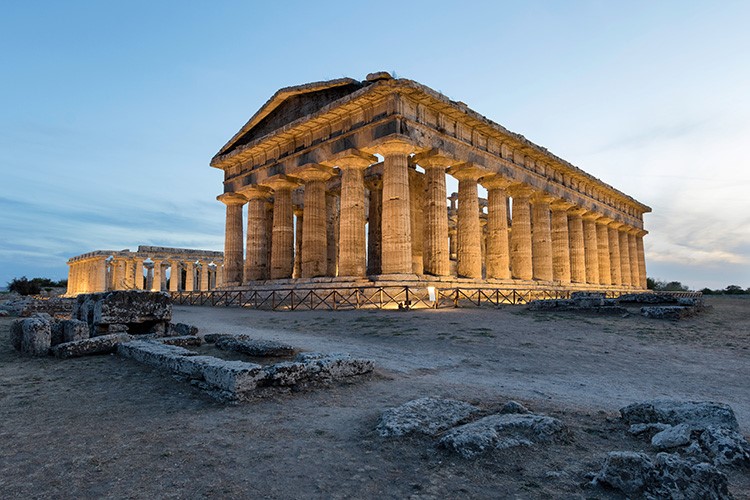
PAESTUM - NAPLES
The archeological zones of Paestum or Poseidonia are one of the Historical Places in Italy that you must include in your tour itinerary. The ruins date back to 600 BC and include three of the world’s best preserved ancient temples of Greece along with a museum which is a powerhouse of information.
While visiting the museum, you will feel amazed looking at daily artifacts of the bygone era made of ceramics, along with millennia-old frescoes. The temples will give you a demonstration of the bulging Doric columns of that period.
Paestum is a Greco-Roman site located south of Naples which contains the stunning remains of three ancient Greek temples which still stand tall today.
Founded as a Greek colony in the 6th century BC, Paestum was originally known as Poseidonia, named for the Greek god Poseidon.
It is estimated that Poseidonia would have become a flourishing town by 540. The area came under the domination of the Lucanians (an indigenous Italic people) sometime before 400 BC, after which its name was changed to Paestum.
Alexander, the king of Epirus, defeated the Lucanians at Paestum about 332 BC. The city remained Lucanian until 273, when it came under Roman rule and a Latin colony was founded there. The locality was still prosperous during the early years of the Roman Empire however, the changing climate and political upheavals of the later Roman Empire saw Paestum begin to decline in the early medieval period and by the turn of the millennium, the site had been abandoned. It was not rediscovered until the 18th century.
In July 1969 a farmer uncovered an ancient Lucanian tomb that contained Greek frescoes painted in the early classical style. Paestum’s archaeological museum contains these and other treasures from the site.
The site also contains impressive defensive walls, a Roman forum, the basic remains of a Roman amphitheatre and a number of ancient tombs. Paestum also boasts an early Christian church and Paestum Museum, which has a wealth of information about the local sites.
TOP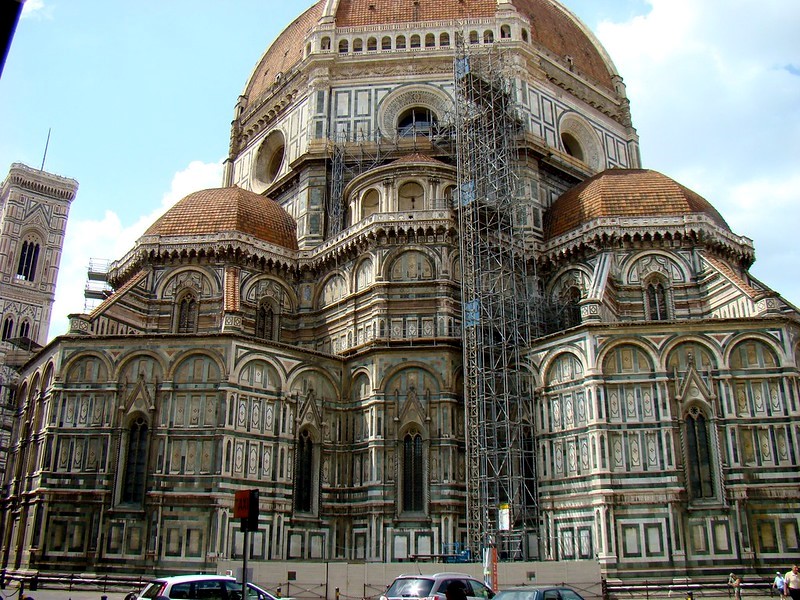
CATHEDRAL OF SANTA MARIA DEL FIORE - FLORENCE
An architectural masterpiece and the pride of the Florentine skyline, the Cathedral of Santa Maria del Fiore is situated in Florence in Italy. It literally translates to “Cathedral of Saint Mary of the Flower” in English. But it is popularly known as The Duomo by the locals. The Cathedral is known for its rich history and architectural marvels. Built in over 150 years, between 1296 and 1436, the building is a blend of different architectural styles that were prevalent in the different eras making it more intriguing than ever. Such a changing face of the Cathedral of Santa Maria del Fiore is evidence of how the architectural taste of people changed with time. Also, the Duomo is more than 152 meters long and 90 meters wide, making it the third largest cathedral in the world.
The Cathedral is one of the most magnificent works of art and is the most famous tourist attraction in Florence. It holds utmost importance when it comes to witnessing intricate artistry. It is an experience that any visitor wouldn’t want to miss. The cathedral’s exterior is made with a mix of pink and green marble and bordered by marble which is a delightful sight to stop and look at.
The cathedral complex, in the main square of Florence, Piazza del Duomo, includes Giotto’s Campanile and the Baptistery and all these three buildings have been recognised as UNESCO World Heritage Site. They are a treasure trove of history, faith and art.
As far as visiting Florence is concerned, the best months are April, May and September. The weather is warm but not too hot for you to enjoy open-air dining and soak in the marvels of the city, on foot, without breaking a sweat.
Known to be the most popular attraction Florence, the plaza around Duomo can have up to 3-hour-long queues by mid-day. So, you have to choose your timing wisely. If you have plans of spending the whole day touring the complex then it is best to visit as soon as the Duomo opens in the morning. But if you have plans of visiting only the highlights (the Dome, the Baptistry and the Campanile) then it is advised to visit in the late afternoon because the sun is on the west, giving the best lighting on the dome.
TOP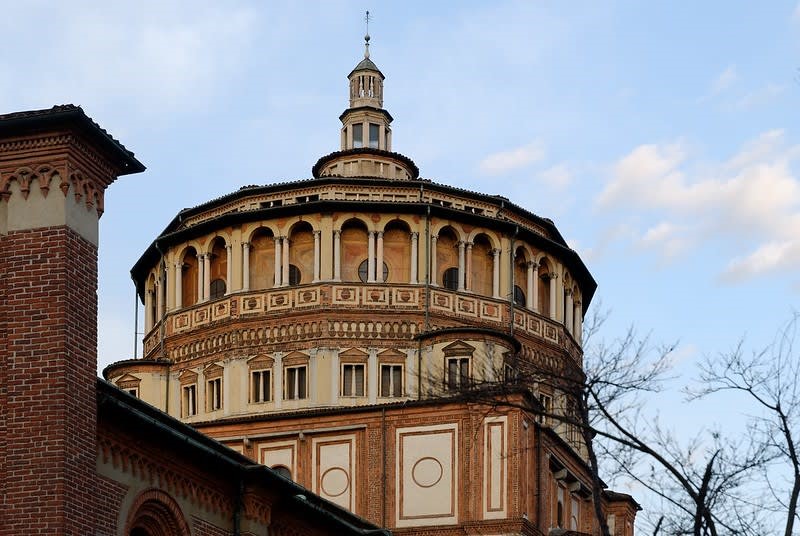
SANTA MARIA DELLE GRAZIE - MILANO
A UNESCO World Heritage Site, Santa Maria Delle Grazie is a church located in the northern city of Milan. Popularly also known as Holy Mary of Grace, this church also works as a Dominican convent in the city. Built by famous architects Guiniforte Solari and Donato Bramante, Santa Maria Delle Grazie was built between 1463 to 1467 during the reign of Duke of Milan Francesco I Sforza. The architectural style of this church is regarded as Gothic and Renaissance and is one of the most beautiful churches in Italy.
Other than a UNESCO World Heritage Site, this church is a very popular tourist destination. It is also one of the highly visited historic churches in Milan and Italy. During World War II, due to the involvement of Italy in the war, the church was attacked by a couple of aerial attacks. A major portion of the refectory was demolished and a few walls of the outer side of the church were also destroyed.
Many tourists visit Santa Maria Delle Grazie to see the painting of Last Supper. It is located in a small room inside the church and only a limited number of visitors are allowed to enter the room at a time. Due to the immense popularity of the church and its historic value, the tickets for the church are sold-out in advance.
This UNESCO World Heritage Site was built by the orders of Duke of Milan Francesco I Sforza in 1463. At the site of the church was an existing chapel which was then replaced by this magnificent church.
Throughout its building years from 1463 to 1497, the main architects of Santa Maria Delle Grazie were Donato Bramante and Guiniforte Solari. The church was home to numerous sculptures and paintings out of which a few were destroyed or stolen. One of Titian’s paintings, The Crowning with Thorns, was stolen by French Soldiers and is now kept in the Louvre in Paris. Santa Maria Delle Grazie has been the primary praying place in Milan for years immemorial. At a time, it was also home to Giovanni Perronu’s finest music-making sessions.
TOP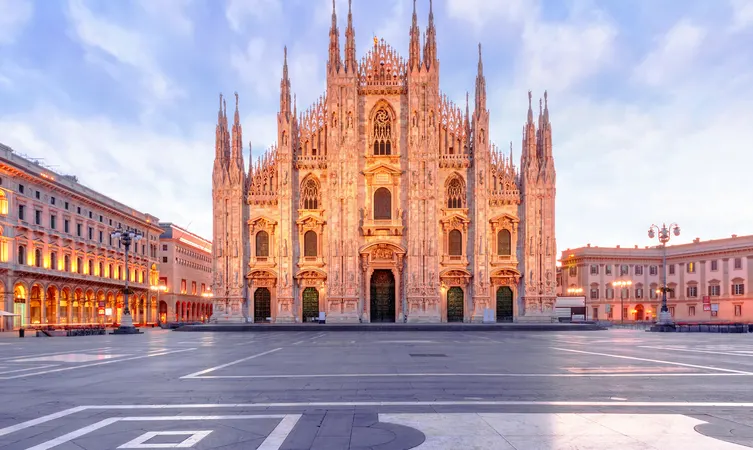
DUOMO DI MILANO - MILANO
Milan Cathedral is one of the most important structures of cultural and religious significance in Milan. It is hailed as the second-largest cathedral in Italy and 3rd biggest catholic church in the entire world. It is dedicated to the Nativity of St. Mary and is the seat of the Archbishop of Milan.
Constructed over the course of around seven centuries, this place has been a site of intense artistic debates, important religious declarations and movements, and political assertion. Today it stands proudly as a grand structure with varying artistic influences reflected in its construction and design. Thousands of visitors flock to this site every day to admire its imposing structure.
Its architecture has elements of both the classical Gothic and Renaissance styles. The Veneranda Fabbrica del Duomo is the organization that was instituted by the lord of Milan in 1386 to oversee the construction of this monument. This organization meticulously conserves this cathedral that is the ultimate example of cultural wholesomeness.
You can have a mesmerizing view of the sunrise from the top of the cathedral. You can even roam around its various intricately designed corridors and marvel at the naturally lit hallways and the altar. It is a supremely surreal experience to see the imposing structure that has stood for centuries, and you must visit this cathedral if you’re visiting the beautiful city of Milan.
TOP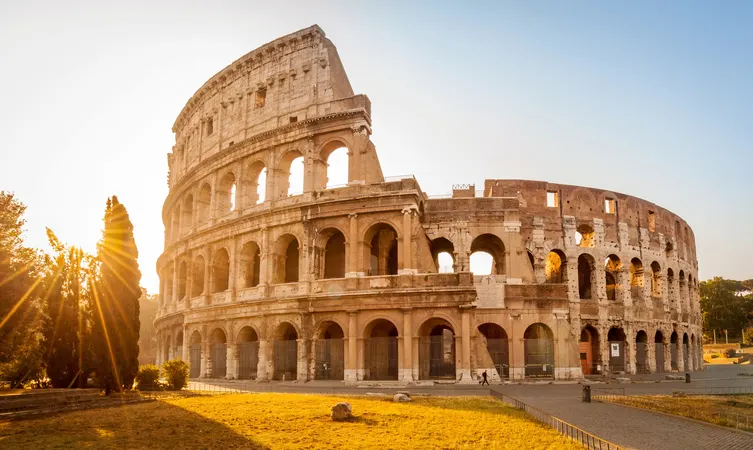
ROMAN ARENA - VERONA
One of the must visit Historical Places in Italy is the Roman amphitheater in Verona, known as The Arena. Built in the 1st century AD for watching gladiator fights, the Arena is the third largest Roman theater in size.
Explore the massive amphitheater which is used as a theater today with a stage, scenery, lighting and the works. Go on a guided tour around the place to know about the interesting history of one of the Historical Landmarks in Italy.
The Verona Arena is a Roman amphitheatre in Piazza Bra in Verona, Italy built in 30 AD. It is still in use today and is internationally famous for the large-scale opera performances given there.
It is one of the best preserved ancient structures of its kind. In ancient times, the arena's capacity was nearly 30,000 people. The stage for concerts and opera performances decreases the available places to a maximum of 22,000.
It will be used as the Closing ceremony venue for the 2026 Winter Olympics and two weeks later will be used for the Opening Ceremony for the 2026 Winter Paralympics in Milan and Cortina d'Ampezzo. The building itself was built in AD 30 on a site which was then beyond the city walls. The ludi (shows and games) staged there were so famous that spectators came from many other places, often far away, to witness them.[citation needed] The amphitheatre could host more than 30,000 spectators in ancient times.
The round facade of the building was originally composed of white and pink limestone from Valpolicella, but after a major earthquake in 1117, which almost completely destroyed the structure's outer ring, except for the so-called "ala" (wing), the stone was quarried for re-use in other buildings. Nevertheless, it impressed medieval visitors to the city, one of whom considered it to have been a labyrinth, without ingress or egress.Ciriaco d'Ancona was filled with admiration for the way it had been built and Giovanni Antonio Panteo's civic panegyric De laudibus veronae, 1483, remarked that it struck the viewer as a construction that was more than human.
TOP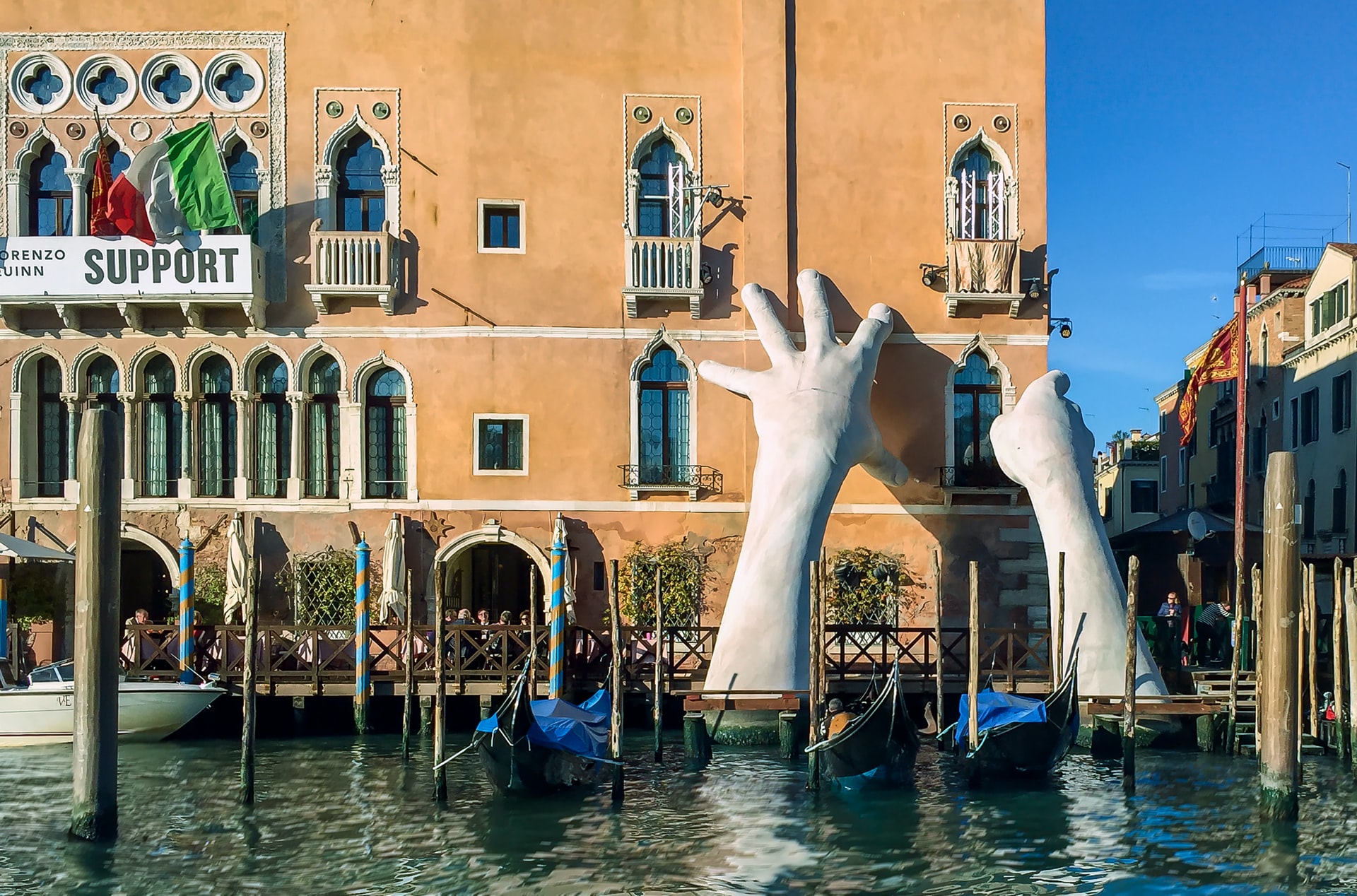
GRAND CANAL - VENICE
The Grand Canal of Venice, Italy defines the perfect blend of romantic boat rides and attractive ancient architecture. It is so beautifully sculpted that anyone can fall in love with it and that's the reason why people from far and wide come to visit this place for the true Venetian escapade.
This splendid S-shaped canal flows through the centre of the city and divides it into two parts while being considered as the most important waterway of the city. Through each side of the canal runs a number of artistically decorated buildings dating back from the 13th to the 18th century, constructed by the richest families of the city that signifies the culture of “Serenissima” republic.
If rich and tumultuous history is your medicine then this place is just for you! The aesthetically erected buildings with classic Venetian architecture and designing that cannot be found anywhere else, century-old palaces, ancient churches and of course the glorious “Gondola Ride” are some of the known facets of the Grand Canal that can fill any sort of a traveller with the excitement. It doesn't matter whether you are travelling with a group or solo, the place has something for everyone and enthrals with its charm and charisma.
TOP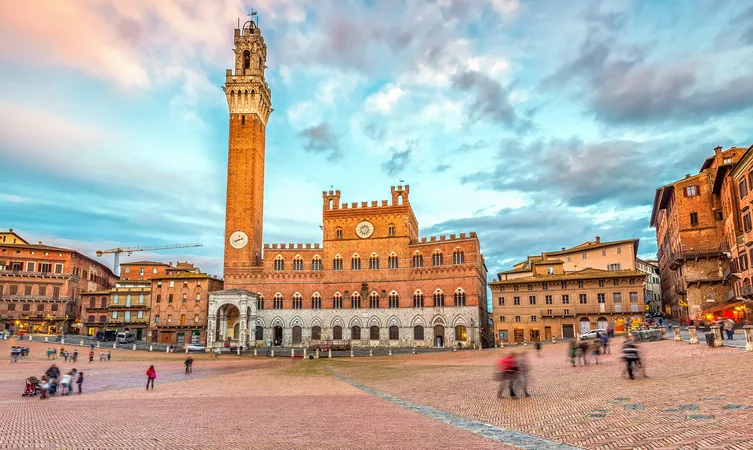
PIAZZA DEL CAMPO - SIENA
Visit The Piazza del Campo, an ancient square in Siena which is one of the famous Historical Landmarks in Italy. The beautiful square is well known for its overall shell shaped form, its bell tower as well as its amazing architecture. The place is one of those Historical Places in Italy that is known for its aesthetic beauty. The Piazza del Campo is also well known as the site of a bi-annual horse race which started in the Mediaeval times and is also a popular place for public performances. Spend some time sitting comfortably on the red brick floors of the square while admiring the various monuments surrounding the place. Piazza del Campo is the main public space of the historic center of Siena, Tuscany, Italy and is regarded as one of Europe's greatest medieval squares. It is renowned worldwide for its beauty and architectural integrity. The Palazzo Pubblico and its Torre del Mangia, as well as various palazzi signorili surround the shell-shaped piazza. At the northwest edge is the Fonte Gaia. The twice-a-year horse-race, Palio di Siena, is held around the edges of the piazza. The piazza is also the finish of the annual road cycling race Strade Bianche. The open site was a marketplace established before the thirteenth century on a sloping site near the meeting point of the three hillside communities that coalesced to form Siena: the Castellare, the San Martino and the Camollia. Siena may have had earlier Etruscan settlements, but it was not a considerable Roman settlement, and the campo does not lie on the site of a Roman forum, as is sometimes suggested. It was paved in 1349 in fishbone-patterned red brick with 8 lines of travertine, which divide the piazza into 9 sections, radiating from the mouth of the gavinone (the central water drain) in front of the Palazzo Pubblico. The number of divisions is held to be symbolic of the rule of The Nine (Noveschi) who laid out the campo and governed Siena at the height of its mediaeval splendour between 1292-1355. The Campo was and remains the focal point of public life in the City. From the piazza, eleven narrow shaded streets radiate into the city. The palazzi signorili[clarification needed] that line the square, housing the families of the Sansedoni, the Piccolomini and the Saracini etc., have unified rooflines, in contrast to earlier tower houses — emblems of communal strife — such as may still be seen not far from Siena at San Gimignano. In the statutes of Siena, civic and architectural decorum was ordered :"...it responds to the beauty of the city of Siena and to the satisfaction of almost all people of the same city that any edifices that are to be made anew anywhere along the public thoroughfares...proceed in line with the existent buildings and one building not stand out beyond another, but they shall be disposed and arranged equally so as to be of the greatest beauty for the city." The unity of these Late Gothic houses is affected in part by the uniformity of the bricks of which their walls are built: brick-making was a monopoly of the commune, which saw to it that standards were maintained At the foot of the Palazzo Pubblico's wall is the late Gothic Chapel of the Virgin built as an ex voto by the Sienese, after the terrible Black Death of 1348 had ended.
TOP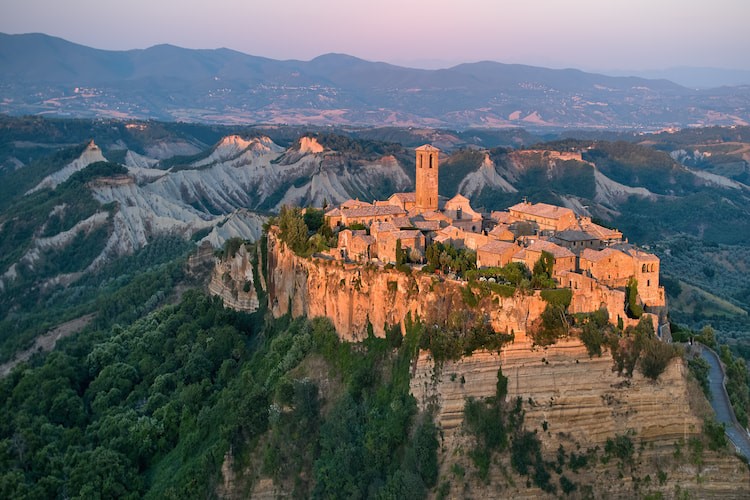
CIVITA DI BAGNOREGIO - LAZIO
Known as ’Il paese che muore’ (The dying town), Civita di Bagnoregio is a stunning medieval city that sits atop an eroded citadel. Founded by the Etruscans 2,500 years ago, it has been continuously inhabited to present day. Civita di Bagnoregio in Italy is a stunning example of a medieval city left relatively untouched by modernity. Known as ‘Il paese che muore’ – the dying town – Civita di Bagnoregio sits atop a rocky outcrop that stands between two valleys. Today the city’s unique history, location and architecture has seen it become a tourist attraction and efforts have been made to try to preserve this historic location. Visitors can see a number of interesting sites as well as the exceptional architecture on display. The fascinating ‘Eutruscan Corridor’ is a Eutruscan tunnel that completely crosses the town. Also worth a visit is the Cave Of Saint Bonaventure, the ancient olive-press and Saint Donato’s Church. There is a tourist information centre at the site which provides a good starting point for visitors. Civita di Bagnoregio in Italy is a Known as ‘Il paese che muore’ – the dying town – Civita di Bagnoregio sits atop a rocky outcrop that stands between two valleys.stunning example of a medieval city left relatively untouched by modernity. Believed to have been founded around 500 BC, Civita di Bagnoregio was originally a Etruscan settlement and sat along an important trade route. Later falling under Roman rule, the area was conquered by the Lombards after the fall of the Western Empire. In fact, the city was once known as Balneum Regis – meaning ‘the bath of the king’, as the Lombard King Desiderious had his wounds treated by the hot springs of the area. Passing later to the Franks and then becoming part of the Papal states, Civita di Bagnoregio is also known for being the birthplace of Saint Bonaventure. An earthquake in 1695 started the decline of Civita di Bagnoregio as many inhabitants began to leave after significant damage occurred. In the following decades and centuries the seismic activity, landslides and erosion saw the Civita di Bagnoregio virtually abandoned as more and more of the city was destroyed.
TOP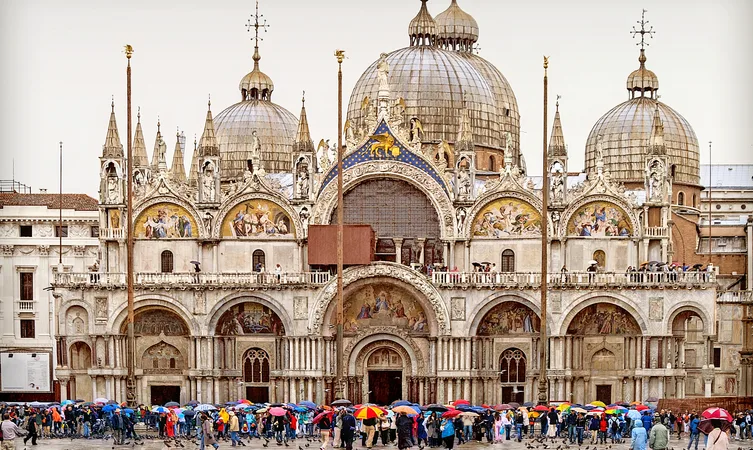
SAINT MARK’S BASILICA - VENICE
Saint Mark’s Basilica is a world famous Byzantine cathedral in Venice’s St. Mark’s Square, sometimes known as Chiesa d’Oro or “Church of Gold”. Every aspect of the basilica is on a grand scale, from its three-part façade with ornate theological carvings to its Greek cross-shaped interior with its ceilings covered in golden mosaics. In fact, the basilica is so elaborate that its entrance or “narthex” is intended to prepare visitors for what they are about to see. Located in the heart of Venice, St Mark’s is found in St Mark’s Square and you’ll walk past the basilica multiple times on any trip there, even if you’re not trying to. Saint Mark’s Basilica (Basilica di San Marco a Venezia) is a world famous Byzantine cathedral in Venice’s St. Mark’s Square, sometimes known as Chiesa d’Oro or “Church of gold”. St. Mark’s Basilica was originally founded in 828 AD, after the relics of the patron saint Mark the evangelist were brought, or reportedly stolen, from Alexandria. At this time it was a temporary building forming part of the palace of the Doge Giustiniano Particiaco. Saint Mark’s Basilica has since undergone a series of transformations, first being built as a permanent church in 832 only to be burnt down in 976 as part of a rebellion. Although the church was rebuilt in 978, it was actually a construction project commenced in 1063 under the auspices of Domenico Contarini which formed the basis of the current form of Saint Mark’s Basilica. The Basilica was consecrated by Vitale Falier on 8 October 1094, when It was dedicated to Saint Mark. Since that time, Saint Mark’s Basilica has undergone a series of changes, both in terms of its architecture and social stature. Numerous people have added to and enhanced St Mark’s Basilica over the years, bringing pieces from around the world which have contributed to its grandeur. From a religious perspective, St Mark’s Basilica was a state church until 1807, when it became the seat of the Patriarch of Venice and, on the subsequent orders of Napoleon, the city cathedral. Every aspect of the historic St Mark’s Basilica is on a grand scale, from its three-part façade with ornate theological carvings to its Greek cross-shaped interior with its ceilings covered in golden mosaics.
TOP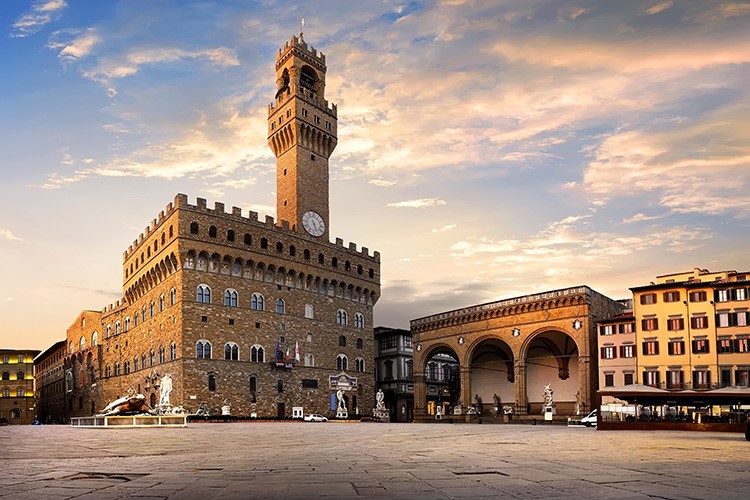
PALAZZO VECCHIO - FLORENCE
Palazzo Vecchio, translated as “Old Palace” and also known as Palazzo della Signoria, is an iconic 14th century palace in Florence most famous for its association with the Medici family. Today, the palace is part of the UNESCO site of Historic Florence. today. In 1540, Palazzo Vecchio underwent a renovation campaign under the remit of Duke Cosimo I, who employed the artist Vasari to add a series of frescos depicting important Florentine events. Many of these frescos can be seen at Palazzo Vecchio, notably in the Salone del Cinquecento, which also contains a beautiful statue by Michelangelo entitled “Victory”. Palazzo Vecchio played a central role in Florence’s civil history, with its bell being the main method of communicating important events, including meetings and any dangerous elements such as fires or possible attacks. Palazzo Vecchio’s location in Piazza della Signoria is also of interest, not only because of the statues and fountains, such as the sixteenth century Fontana do Nettuno, but also as this was the site of the execution of Girolamo Savonarola. Savonarola was a Dominican priest and a leader of Florence who was excommunicated by Pope Alexander VI and burnt at the stake in 1498.
TOP
TAORMINA - MESSINA
TAORMINA is a comune (municipality) in the Metropolitan City of Messina, on the east coast of the island of Sicily, Italy. Taormina has been a tourist destination since the 19th century. Its beaches on the Ionian sea, including that of Isola Bella, are accessible via an aerial tramway built in 1992, and via highways from Messina in the north and Catania in the south. On 26–27 May 2017 Taormina hosted the 43rd G7 summit. The tower of the 13th century Palazzo Corvaja showing the Gothic influence. The history of Taormina dates back to before Ancient Greece established its first colony on Sicily in 734 BCE. After the fall of the Western Roman Empire, Taormina continued to rank as one of the more important towns of the island. Taormina followed the history of Sicily in being ruled by successive foreign monarchs. After the Italian unification, Taormina began to attract well-off tourists from northern Europe, and it became known as a welcoming haven for gay men and artists. The present town of Taormina occupies the ancient site, on a hill which forms the last projecting point of the mountain ridge that extends along the coast from Cape Pelorus to this point. The site of the old town is about 250 metres (820 ft) above the sea, while a very steep and almost isolated rock, crowned by a Norman castle, rises about 150 metres (490 ft) higher. This is the likely site of the ancient Arx or citadel, an inaccessible position mentioned by ancient writers. Portions of the ancient walls may be traced at intervals all round the brow of the hill, the whole of the summit of which was occupied by the ancient city. Numerous fragments of ancient buildings are scattered over its whole surface, including extensive reservoirs of water, sepulchres, tessellated pavements, etc., and the remains of a spacious edifice, commonly called a Naumachia, but the real purpose of which it is difficult to determine. The Ancient theatre of Taormina is built for the most part of brick, and is therefore probably of Roman date, though the plan and arrangement are in accordance with those of Greek, rather than Roman, theatres; whence it is supposed that the present structure was rebuilt upon the foundations of an older theatre of the Greek period. With a diameter of 109 metres (358 ft) (after an expansion in the 2nd century), this theatre is the second largest of its kind in Sicily (after that of Syracuse); it is frequently used for operatic and theatrical performances and for concerts. The greater part of the original seats have disappeared, but the wall which surrounded the whole cavea is preserved, and the proscenium with the back wall of the scena and its appendages, of which only traces remain in most ancient theatres, are here preserved in an uncommon state of integrity. From the fragments of architectural decorations still extant we learn that it was of the Corinthian order, and richly ornamented. Some portions of a temple are also visible, converted into the church of San Pancrazio, but the edifice is of small size.
TOP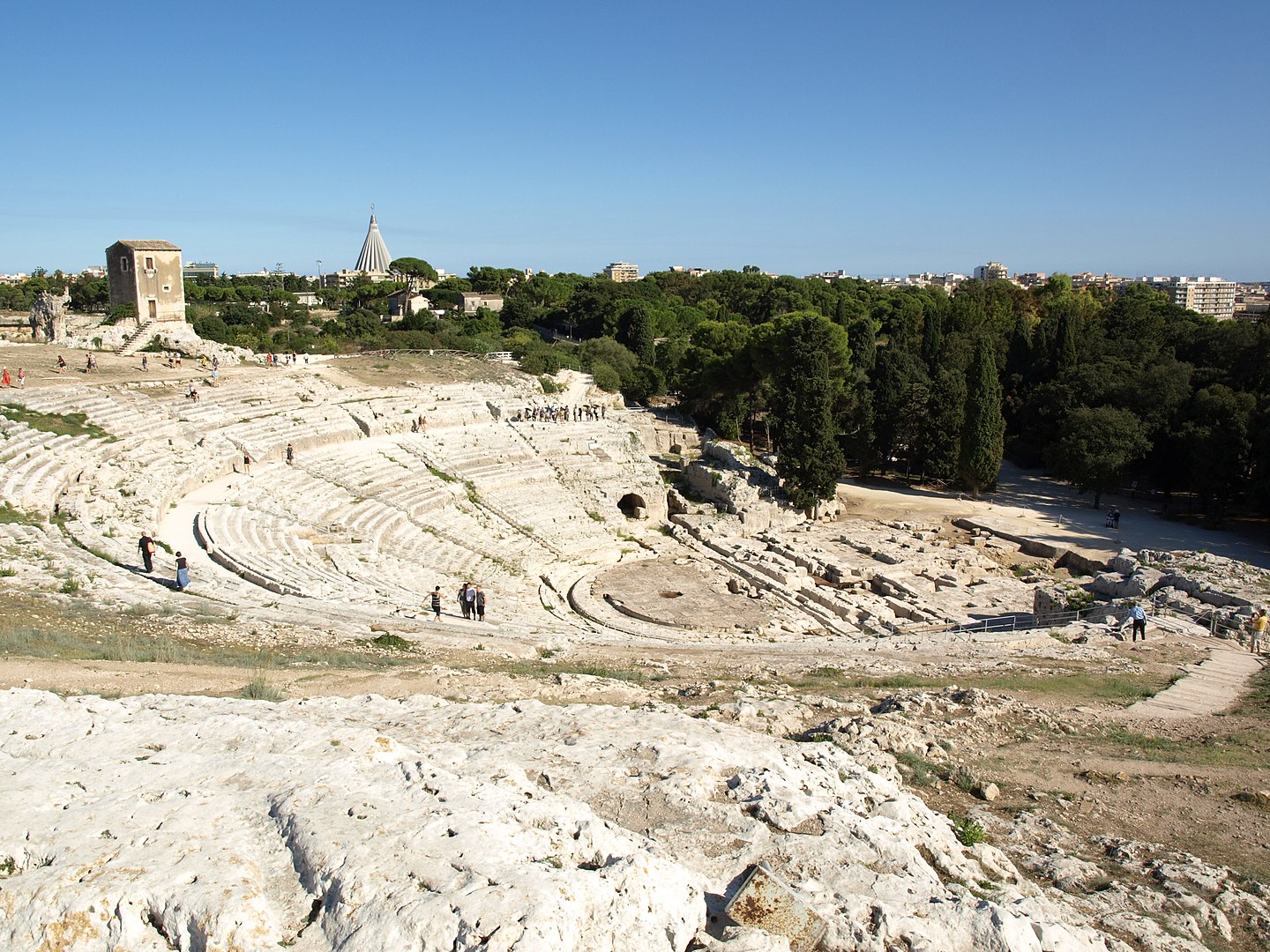
GREEK THEATRE OF SYRACUSE - SYRACUSE
The Greek theatre of Syracuse lies on the south slopes of the Temenite hill, overlooking the modern city of Syracuse in southeastern Sicily, Italy. It was first built in the 5th century BC, rebuilt in the 3rd century BC and renovated again in the Roman period. Today, it is a part of the Unesco World Heritage Site of "Syracuse and the Rocky Necropolis of Pantalica". Despite its abandoned state, it remains one of the most beautiful locations in the world, offering the most grandiose and picturesque spectacle that there is. — Vivant Denon, Voyage en Sicile, 1788 The existence of a theatre at Syracuse is attested by the end of the fifth century BC by the mime author, Sophron, who names the architect as Damokopos, called "Myrilla" because he made heavy use of perfume ("myrrha") at the inauguration. It has not been proven, however, that the passage records this monument and some think that it refers to another theatre in another location. However it is certain that a theatre was used in Syracuse from the early classical period and in it, it seems, the theatrical activities of the playwrights Epicharmus, Phormis and Deinolocus took place. At Syracuse, Aeschylus put on "The Aitnans" (a tragedy written to celebrate the re-foundation of Catania with the name Aitna, or of a centre with the name of Aitna where the Catanian exiles had found refuge after the destruction of Chalcidean Katane at the hands of Hieron I), probably in 456 BC. Also The Persians, which had already been performed at Athens in 472 BC, may have been performed at Syracuse. This latter work survives to this day, while the former has been lost. At the end of the fifth century or the beginning of the fourth, the plays of Dionysius I were probably performed here, along with those of the playwrights hosted at his court, such as Antiphon. It has been theorised by Polacco that in this period the theatre did not yet have the semicircular form that became canonical in the course of the third century, but might instead have been made up of straight banks of seating arranged in a trapezoid. Diodorus Siculus refers to the arrival of Dionysius at Syracuse in 406 BC as the people were exiting the theatre. Plutarch recounts the escape of an angry bull during a citizen assembly in 355 BC and the arrival of Timoleon in a carriage in 336, while the people were meeting here, testifying to the importance of the building in public life.
TOP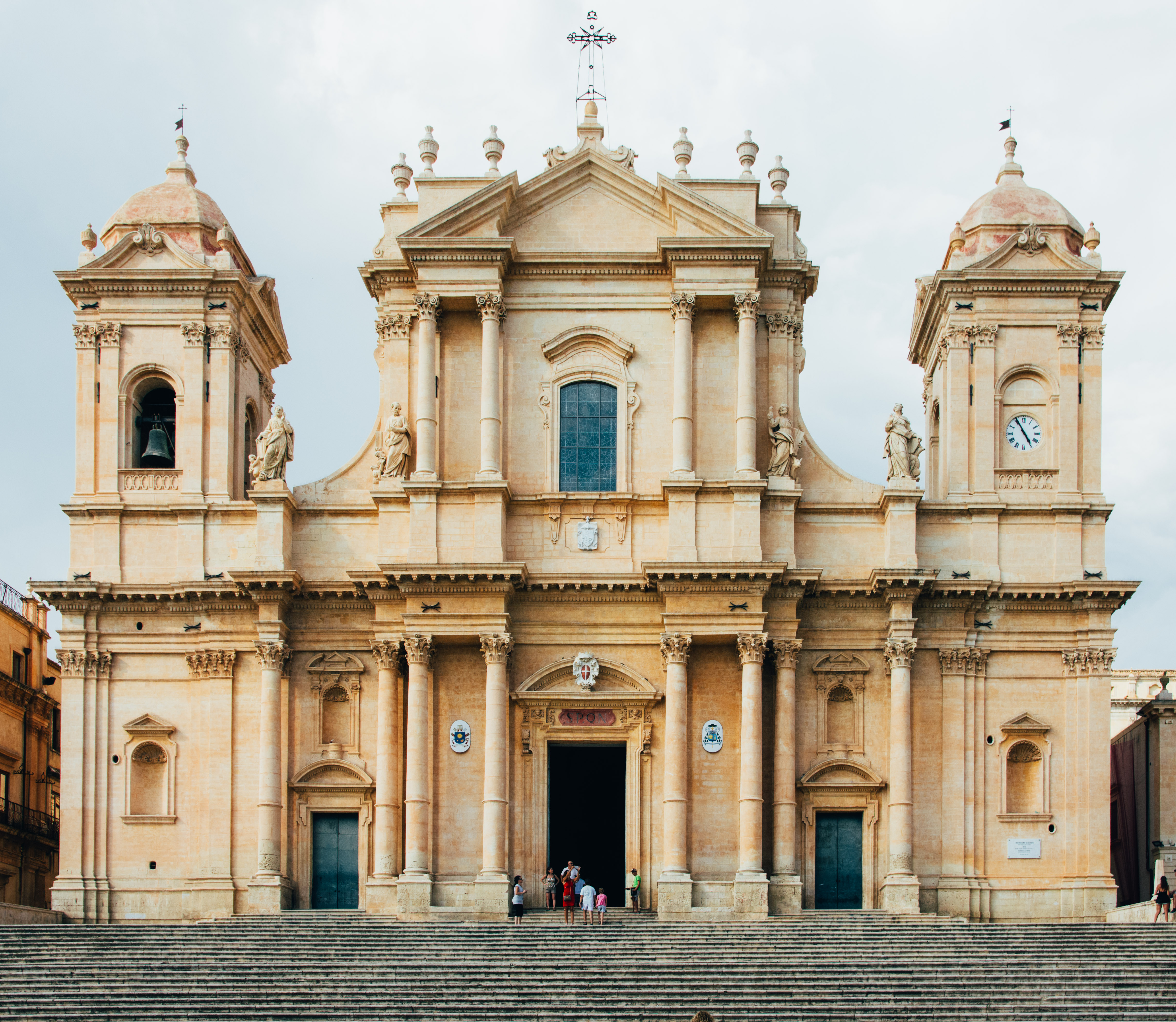
NOTO CATHEDRAL - NOTO
NOTO CATHEDRAL is a Roman Catholic cathedral in Noto in Sicily, Italy. Its construction, in the style of the Sicilian Baroque, began in the early 18th century and was completed in 1776. It is dedicated to Saint Nicholas of Myra, and has been the cathedral of the Diocese of Noto since the diocese's establishment in 1844. The cathedral dome collapsed in 1996 as a result of unremedied structural weakening caused by an earthquake in 1990, to which injudicious building alterations in the 1950s may have contributed. It has since been rebuilt, and was reopened in 2007. History Construction of the Church of St Nicholas began in the early 18th century, as part of the general reconstruction in Sicily following the devastating earthquake of 1693. The long interval between the beginning of the building, to designs by Rosario Gagliardi, and its completion in 1776 under the supervision of Bernardo Labisi,[1] probably accounts for various peculiarities and inconsistencies of design, and the introduction of Neo-Classical elements. Moreover, the principal doorways are revivals of 15th-century architecture, based on the style of Vignola or Domenico Fontana. The large central window of the west front, with its "ears" and curvilinear tympanum borrows from the repertoire of Andrea Pozzo and resembles work elsewhere in Noto by Francesco Paolo Labisi (for example, the Chiesa del Carmine). The façade, the composition of which is comparable to those of the church of Notre-Dame, Versailles, and the pre-revolutionary church of Saint-Roch in Paris, was started in late 1767 (the nearby campanile bears the date 1768) to designs of about 1740 by Gagliardi. In the 19th century the dome had to be reconstructed twice, ending up as a Neo-Classical construction, after collapses caused by earthquakes. In the 1950s much refurbishment was carried out, not entirely successfully, for example the trompe-l'œil of the vertical elements and the tempera decoration of the vaults by the painters Arduino and Baldinelli, as well as major alterations to the high altar and the organ. Most serious however was the replacement of the original pitched roof of the nave by a heavy loft of Roman brick and concrete which was probably one of the causes of the collapse of 1996. Collapse On March 13, 1996, a large part of the cathedral collapsed: four of the piers of the southern side of the nave, one of the four piers supporting the dome, the entire roof and vault of the nave, three quarters of the drum and the dome with the lantern, the roof of the south arm of the transept, with many of the cupolas and much of the roof of the right aisle. The reconstruction was a complex process. Analysis of the debris and the remaining structure made clear how complicated its building history had been, because of the repeated repairs, in a great variety of materials, made necessary by earlier earthquake damage, and also because not all the repairs had been well executed. The task was made all the more onerous by the importance and high visibility of the cathedral in the city of Noto, the so-called capital of Sicilian Baroque architecture.
TOP
